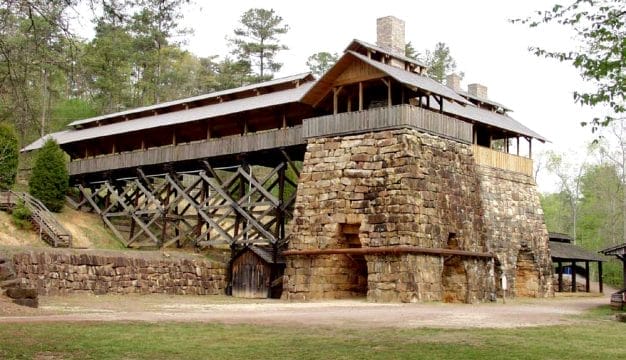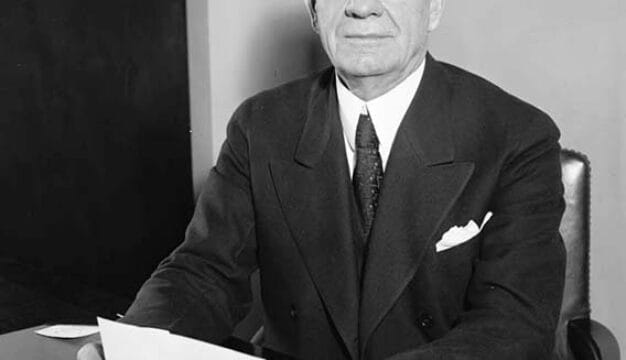Nicola Marschall
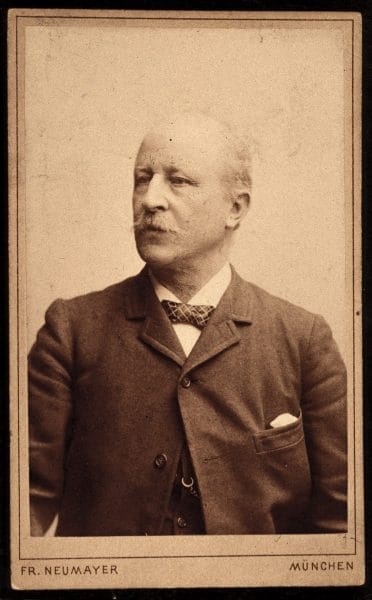 Nicola Marschall
A prolific portrait painter and generally accepted designer of the first National Confederate Flag, known as the “Stars and Bars,” Nicola Marschall (1829-1917) was probably Alabama‘s most celebrated portrait artist. Born in St. Wendel, in Rhenish Prussia (now the German state of Saarland), Marschall’s family were prominent and successful vintners and tobacco merchants. His father founded the Marschall Tobacco Company in St. Wendel, which operated until 1960. Marschall began studying art and music at an early age, and in 1849 he decided to pursue his talents further by emigrating to the United States after securing lodging with a relative in Mobile. By August 1851, Marschall had joined the faculty of the Marion Female Seminary and established a studio in Marion, in west-central Alabama. A brochure described Marschall as “a pupil of the celebrated Dusseldorf Academy, and for accuracy of drawing, boldness of conception and richness of coloring, is unsurpassed by any artist in the country. Mr. Marschall is a very superior performer of the Guitar and Violin, and also assists Professor Daly on the Piano and Harp. He speaks English fluently, correctly, and with purity, and is highly competent to teach the German and English languages.”
Nicola Marschall
A prolific portrait painter and generally accepted designer of the first National Confederate Flag, known as the “Stars and Bars,” Nicola Marschall (1829-1917) was probably Alabama‘s most celebrated portrait artist. Born in St. Wendel, in Rhenish Prussia (now the German state of Saarland), Marschall’s family were prominent and successful vintners and tobacco merchants. His father founded the Marschall Tobacco Company in St. Wendel, which operated until 1960. Marschall began studying art and music at an early age, and in 1849 he decided to pursue his talents further by emigrating to the United States after securing lodging with a relative in Mobile. By August 1851, Marschall had joined the faculty of the Marion Female Seminary and established a studio in Marion, in west-central Alabama. A brochure described Marschall as “a pupil of the celebrated Dusseldorf Academy, and for accuracy of drawing, boldness of conception and richness of coloring, is unsurpassed by any artist in the country. Mr. Marschall is a very superior performer of the Guitar and Violin, and also assists Professor Daly on the Piano and Harp. He speaks English fluently, correctly, and with purity, and is highly competent to teach the German and English languages.”
 4th Alabama Infantry Flag
According to a 1917 newspaper interview with Marschall, in February 1861, he was approached by Mary Clay Lockett, wife of prominent attorney Napoleon Lockett, and her daughter, Fannie Lockett Moore, daughter-in-law of then-governor Andrew Barry Moore, to design a flag for the Confederacy. Marschall’s artistic abilities were well known to the Locketts, as he had taught art to Lockett family members and painted portraits of prominent southern families. In his own writings, he states that he created three designs, one of which became the Confederate “Stars and Bars,” which was first raised in Montgomery on March 4, 1861. No individual was credited as the primary designer of the flag by the Flag and Seal Committee in any of the southern newspapers of the time, however. But given Marschall’s artistic reputation and his connections to the Alabama governor as well as other flags designed by him that are held by the Alabama Department of Archives and History, scholars generally agree that his design was the one chosen. The flag does resemble that of Austria, which as a Prussian Marschall would have known well. Marschall is also credited as the designer of the Confederate uniform, which was likely based on the style of the Austrian military uniform.
4th Alabama Infantry Flag
According to a 1917 newspaper interview with Marschall, in February 1861, he was approached by Mary Clay Lockett, wife of prominent attorney Napoleon Lockett, and her daughter, Fannie Lockett Moore, daughter-in-law of then-governor Andrew Barry Moore, to design a flag for the Confederacy. Marschall’s artistic abilities were well known to the Locketts, as he had taught art to Lockett family members and painted portraits of prominent southern families. In his own writings, he states that he created three designs, one of which became the Confederate “Stars and Bars,” which was first raised in Montgomery on March 4, 1861. No individual was credited as the primary designer of the flag by the Flag and Seal Committee in any of the southern newspapers of the time, however. But given Marschall’s artistic reputation and his connections to the Alabama governor as well as other flags designed by him that are held by the Alabama Department of Archives and History, scholars generally agree that his design was the one chosen. The flag does resemble that of Austria, which as a Prussian Marschall would have known well. Marschall is also credited as the designer of the Confederate uniform, which was likely based on the style of the Austrian military uniform.
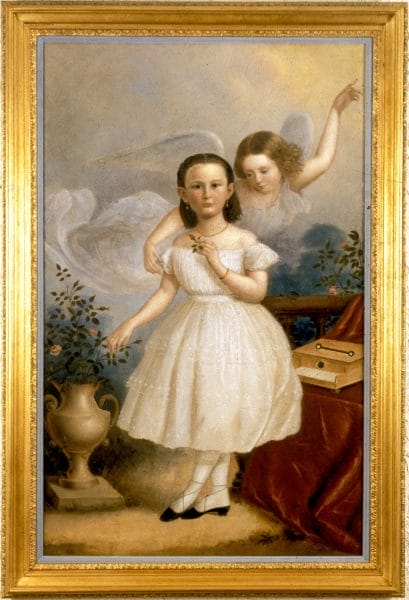 The Hale Child
In April 1862, Marschall enlisted as a private in the Confederate Army in Col. William Byrd’s regiment based at Forts Morgan and Gaines at the mouth of Mobile Bay. Marschall was described in his enlistment papers as “5 feet 7 inches high, light complexion, blue eyes, light hair and by profession a portrait painter.” By January 1864, he had risen to the rank of lieutenant in the Second Alabama Regiment of Engineers, as chief draftsman of maps and fortifications, some of which exist today. After the war ended in 1865, he returned to Marion and married Martha Eliza Marshall (1846-1919) of Perry County, whose portrait he painted in 1867 as a companion piece to one of himself. Both portraits are now located in the First White House of the Confederacy in Montgomery, Alabama. The couple had three children.
The Hale Child
In April 1862, Marschall enlisted as a private in the Confederate Army in Col. William Byrd’s regiment based at Forts Morgan and Gaines at the mouth of Mobile Bay. Marschall was described in his enlistment papers as “5 feet 7 inches high, light complexion, blue eyes, light hair and by profession a portrait painter.” By January 1864, he had risen to the rank of lieutenant in the Second Alabama Regiment of Engineers, as chief draftsman of maps and fortifications, some of which exist today. After the war ended in 1865, he returned to Marion and married Martha Eliza Marshall (1846-1919) of Perry County, whose portrait he painted in 1867 as a companion piece to one of himself. Both portraits are now located in the First White House of the Confederacy in Montgomery, Alabama. The couple had three children.
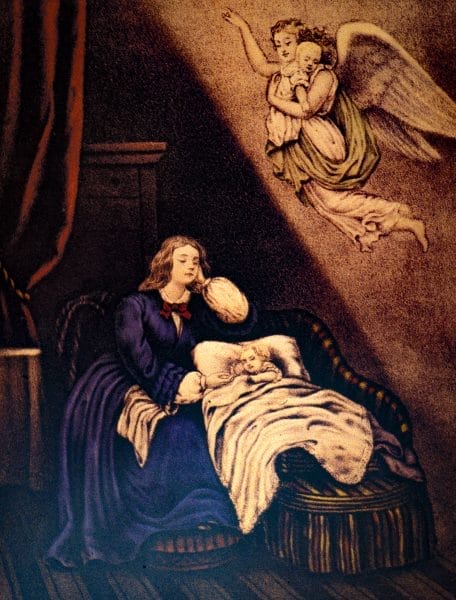 The Mother’s Dream
There are more than 150 extant portraits (most likely a fraction of his lifetime output) by Marschall, and the subjects include Jefferson Davis, Abraham Lincoln, Napoleon, Otto von Bismarck, numerous Confederate and Union soldiers, relatives, and southern families, as well as landscapes and religious paintings. Marschall’s style is stark and realistic, detailed and richly colored, usually in an oval format in a square or oval frame. He frequently signed and often dated his work.
The Mother’s Dream
There are more than 150 extant portraits (most likely a fraction of his lifetime output) by Marschall, and the subjects include Jefferson Davis, Abraham Lincoln, Napoleon, Otto von Bismarck, numerous Confederate and Union soldiers, relatives, and southern families, as well as landscapes and religious paintings. Marschall’s style is stark and realistic, detailed and richly colored, usually in an oval format in a square or oval frame. He frequently signed and often dated his work.
Possibly owing to the economic devastation of the Civil War, Marschall and his family moved to Louisville, Kentucky, in 1873, where he continued to support his family as a portrait artist until his death on February 24, 1917, and burial there. Marschall’s legacy is a pictorial record of nineteenth-century southern elites and the most recognized symbols of the Confederacy, the Stars and Bars and the Confederate uniform. Additionally, Marschall’s life and paintings are well represented in various museums and collections of descendents, including sketchbooks, award medals, family photographs, and personal artifacts.
Further Reading
- Cannon, Devereaux D., Jr. The Flags of the Confederacy: An Illustrated History. Memphis, Tenn.: St. Lukes Press; Wilmington, N.C.: Broadfoot Publishers, 1988.
- Chambers, Bruce W. Art and Artists of the South. Columbia, S.C.: University of South Carolina Press, 1984.
- Stevenson, Lauralee Trent. Confederate Soldier Artists: Painting the South’s War. Shippensburg, Pa.: White Mane Publishing, 1998.
